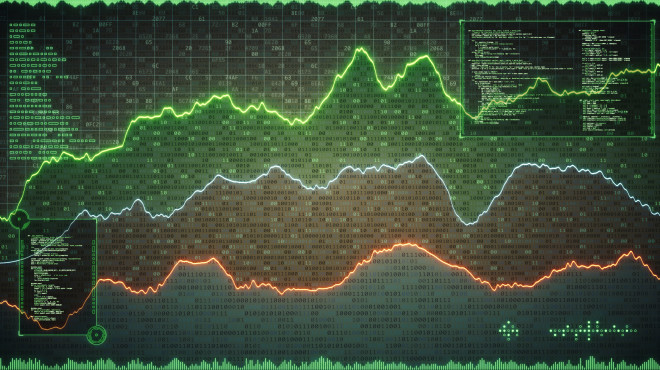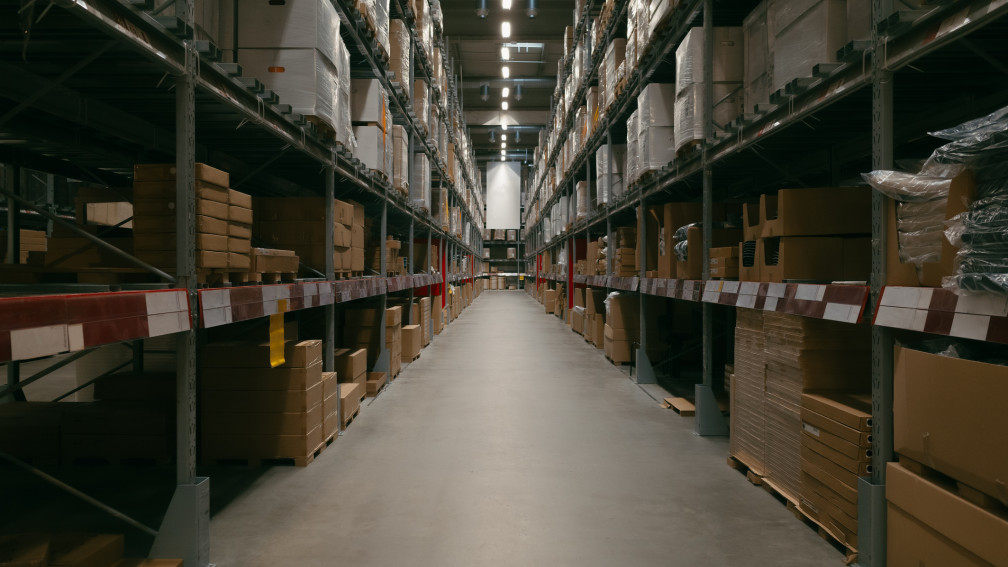
Swiss economy on the upswing
The gradual return to normality and positive impulses from the global economy are ensuring a strong upswing in many Swiss companies this year. economiesuisse expects gross domestic product (GDP) to grow by 3.4 percent in 2021, making up for last year's slump. The upswing will be driven equally by the export industry and the domestic economy. The outlook for 2022 is also promising. However, economic, political, and pandemic-related uncertainties remain high and could cloud the positive outlook. Unemployment (ILO definition) is falling from an average of 5.2 percent this year to 4.9 per cent next year. Inflation is rising slightly and has been back in positive range since the beginning of this year.
The negative economic impact of the pandemic decreases sharply thanks to the increasing vaccination coverage of the population. In many industrialised countries, the restrictions can be lifted step by step and consumption is increasing worldwide. While many companies held back last year, investments are now increasing again. Due to the growth spurt in the global economy, many raw materials are in greater demand again. Prices for light metals, steel and oil are rising accordingly. The two largest markets, the USA and China, are serving as growth engines for the global economy and are helping to stimulate the export economy of European countries. For example, the European machinery industry or the German automotive industry are visibly recovering from last year's crisis-related slump. The impulses from overseas are helping the European economy, which is otherwise lagging somewhat behind the global economy.
Strong growth rates in sectors particularly affected by the pandemic
The recovery of the Swiss economy can be characterised as follows: Those industries with the largest growth slumps last year generally show strong growth rates in 2021. This applies to both the export industry and the more domestically oriented industries. In the export of goods, the machine, electrical and metal industry, as well as the textile and watch industry are currently experiencing a significant revival in international demand, resulting in strong growth compared to the crisis-ridden 2020. The same is true for those industries that were directly or indirectly burdened by official closures and requirements. Thus, the value chain in the entire travel sector, in tourism, gastronomy or in retail trade is clearly increasing again. However, this does not mean that the pre-crisis level will already be reached in 2021: International travel is only recovering gradually, and it will be months before trade fairs, congresses and large events will be held on the same scale as before the crisis. In the airline industry, in the hotel industry and in the event sector, the recovery will therefore be significantly delayed.
Continued positive development for “trend” industries
However, the economic recovery is not limited to industries that suffered particularly from the pandemic. Industries that were able to maintain or even expand their value creation in 2020 are also optimistic about the future. In the chemical-pharmaceutical industry and the medical technology sector, for instance, the growth trend is unbroken. These sectors will also be able to grow this year and next, especially in those segments that have been negatively impacted by the crisis. The Swiss healthcare sector as a whole will also grow. In the services sector, the growth trend in insurance will continue. The value creation of banks will also increase this year and next, albeit somewhat less dynamically. The positive but still challenging economic environment also ensures continued strong demand for management consulting services. Parallel to the strong growth of the economy as a whole, demand for recruitment services is also picking up.
The situation in construction is somewhat different. While the sector witnessed a slight decline at a high evel in 2020, value creation is rising again in 2021. Incoming orders in the construction industry have risen significantly compared to 2020. However, the prices for building materials, which have risen sharply in some cases, are having a dampening effect. Overall, it can be assumed that both private residential and commercial construction as well as the construction volume of public corporations will increase this year and next. The food industry is also expected to see a slight increase in value creation this year and next. In contrast to the growth sectors, however, the necessary structural adjustments in telecommunications or the printing industry continue to cause negative growth rates.
Private consumption increases strongly
Many consumers saved a lot of money during the pandemic. In addition, the extensive state support, especially short-time work compensation, have prevented a slump in incomes and real wages have risen despite the crisis. In addition, the falling unemployment rate and the decline in short-time work are supporting private consumption, which is increasing strongly overall compared to the previous year. In addition, private investment is rising significantly after many projects were postponed last year due to the great uncertainty.
Overall, real GDP will grow by 3.4 percent in 2021. This should bring it back to the pre-crisis level in the fourth quarter. For next year, too, the signs are pointing to recovery, so that GDP is expected to increase by almost another three percent.
Inflation back in positive territory, unemployment rate is declining
The broad-based upswing means that in many cases it is possible to return from short-time back to full-time work or to find new employment and that there is no increase in unemployment to be expected. Thus, the unemployment rate will fall below the three percent mark again in 2022. Despite the rapid economic recovery, consumer prices in Switzerland are not expected to rise sharply. It is true that there will be price increases due to shortages, delivery delays and rising raw material and transport costs. However, the strong competition from abroad and the still existing output gap prevent a significant increase in producer prices in Switzerland. Due to the resurgence of shopping tourism, increased online purchases and better price transparency, price increases cannot be easily implemented on a broad front in the Swiss market. However, the inflation rate will return to a positive range.
Rising debt, high asset values, uncertain pandemic course
The biggest risk for the Swiss economy remains the pandemic: if the epidemiological situation were to get out of control again, this would have serious consequences for the global economic development. For the positive outlook not to be dampened, the population must be vaccinated to a large extent by autumn. A second major risk is associated with the long-standing low interest rate policy. The latter is largely responsible for the fact that private and public debt has risen sharply in many countries. The pandemic has now led to a further increase in debt. Therefore, the risk of uncontrolled developments on the financial markets, the outbreak of a second euro crisis or a resurgence of the Swiss franc cannot be ruled out. The persistently rising real estate prices in many countries, including Switzerland, also increase the risk of abrupt market corrections in the future. A third risk for the economy is posed by international politics. For example, the trade conflict between the USA and China continues to smoulder, and nationalistic tendencies may increasingly hinder world trade in the future. And finally, with inflation, a new downside risk has emerged that has been somewhat forgotten in recent years. Although prices are not expected to rise sharply in Switzerland, commodity price increases, combined with a continuing expansionary monetary policy, could bring inflation back worldwide. This would entail the risk of a wage price spiral also in Switzerland in the medium term.
|
Forecasts National accounts |
|||||
|
Change compared to previous year (%) |
|||||
|
2018 |
2019 |
2020 |
2021 P |
2022 P |
|
|
Gross domestic product, real |
3.0 |
1.1 |
-2.6 |
3.4 |
2.8 |
|
Private spending |
0.8 |
1.4 |
-4.4 |
3.8 |
2.5 |
|
Public spending |
0.9 |
0.9 |
3.6 |
2.6 |
-1.2 |
|
Construction investments |
0.0 |
-0.5 |
-1.0 |
0.9 |
0.5 |
|
Investments in equipment |
1.2 |
2.2 |
-2.9 |
4.0 |
3.4 |
|
Exports (total)1 |
5.0 |
2.1 |
-5.2 |
7.0 |
4.5 |
|
Imports (total)1 |
3.3 |
2.5 |
-8.7 |
7.4 |
3.5 |
|
1 Excluding non-monetary gold and valuables |
|||||
|
Forecast prices and labour market |
|||||
|
Inflation rate |
0.9 |
0.4 |
-0.7 |
0.5 |
0.8 |
|
Unemployment rate |
2.5 |
2.3 |
3.1 |
3.2 (ILO: 5.2) |
2.9 (ILO: 4.9) |
|
Exogenous forecast* |
|||
|
2021 |
2022 |
||
|
Exchange rate CHF/Euro |
1.08 |
1.08 |
|
|
Exchange rate CHF/$ |
0.90 |
0.90 |
|
|
Oil price in $ |
70 |
75 |
|
|
Growth rate U.S. |
6.4 |
3.5 |
|
|
Growth rate Euro-Zone |
4.4 |
4.0 |
|
|
Growth rate China |
8.6 |
5.8 |
|
|
Short-term interest rates |
-0.7 |
-0.7 |
|
|
Federal bond yield |
-0.2 |
0.0 |
|
|
* Input variables for the estimation of economic forecasts |
|||










